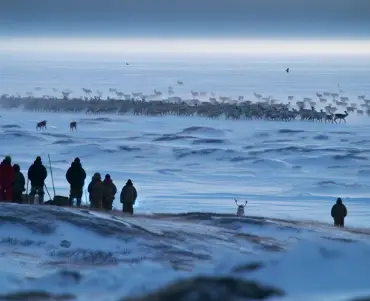At a recent gathering in Anchorage, subsistence hunters from Alaska received a sobering update on caribou populations, a concern shared by communities across the circumpolar north. Biologist Tim Fullman, along with other experts, shared insights at the All-Council meeting of the Federal Subsistence Board, shedding light on a disturbing trend affecting caribou and reindeer herds globally.
In an alarming revelation, the once vast George River herd in eastern Canada, which boasted over 800,000 animals in the 1990s, has plummeted by 99% to just 7,200. Similar declines are observed in the Northwest Territories and Nunavut’s Bathurst herd, with numbers dropping from 450,000 to 6,240 since 1986. Various Canadian herds face declines of 60% to 80%, with some classified as threatened or endangered.
Alaska is experiencing its own share of challenges, with significant reductions in key herds such as the Western Arctic, Mulchatna, and Nelchina. The state’s seven largest herds have seen numbers fall from over 900,000 to 525,000, the lowest since 1986. “I used to say we have more caribou than we have people in the state of Alaska. But that no longer is the case,” Fullman remarked.
Despite the grim overall picture, there are glimmers of hope, such as the Porcupine Caribou Herd, which hit a record high in 2017. Yet, the prevailing trend is one of decline, with climate change and habitat alteration from development cited as primary causes..
The decline of the Western Arctic Caribou Herd, once among the largest in North America, has prompted calls for reduced hunting to protect the remaining population.

